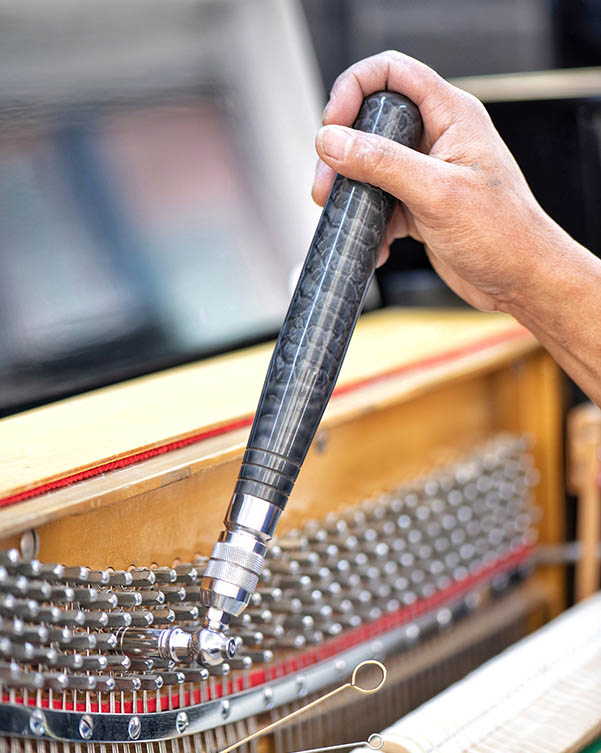Piano Tuning
Best Quality Tuning For Your Piano.
Thank you for setting up a piano tuning/servicing! Piano tuning is the intricate and subtle movement of the tuning pins that either raises or lowers the string tension which changes the pitch.
There are approximately 230 strings in every piano! A single string puts out many different pitches called partials and these partials are not the same from piano to piano. For this reason, pianos need to be “tuned to themselves” for the instrument to sound its best.
The ultimate goal of tuning a piano is for it to sound the most pleasing to the ear. For this reason, I tune many different styles to meet the needs of all types of pianos, pianists and genres. When a piano is in tune, the strings from one note interact with strings from other notes, causing them to vibrate. This makes the piano sound lively and resonant and wonderful. We can make very slight changes in the tunings of certain strings to encourage even more resonance from the piano. These slight changes to “normal” tuning can range from hardly noticeable to profound. I offer the following tunings:
• Symmetrical Equal Temperament (SymET): This tuning is of my own design and it plays identically to the standard equal temperament (“normal tuning”) but adds more resonance to the piano.
• Symmetrical Well Temperament (SymWell): I designed this tuning based on the same principle as the Symmetrical Equal Temperament to promote greater resonance, while simultaneously combining with traditional “key color,” following a historical model. This is incredibly versatile and works for all styles. This is generally my default tuning for small pianos, although it also sounds great on larger pianos.
• Modified Kellner: In this tuning, each key has its own distinct “personality” and really helps us understand why some of the great composers of our past chose the keys they did for each piece. Not only this, the entire piano significantly becomes clearer and more resonant. It even allows for extended pedaling and greater dynamic control. It is great for Classical and Jazz. This is a great tuning for high quality instruments, including grands and uprights.
• Modified Kirnberger III: This is my personal favorite. My own pianos are tuned this way. It does everything that the Modified Kellner does, but adds greater resonance, clarity and projection to the piano. This is ideal for high quality instruments, especially medium and large grands.


